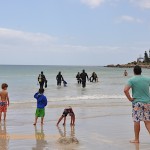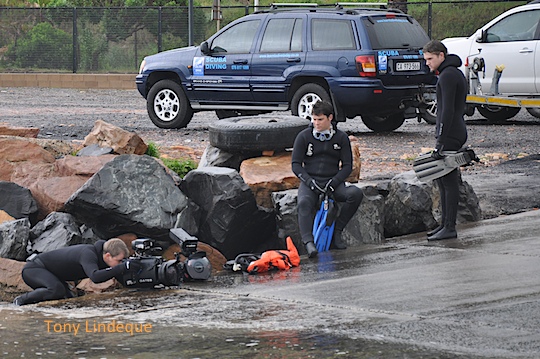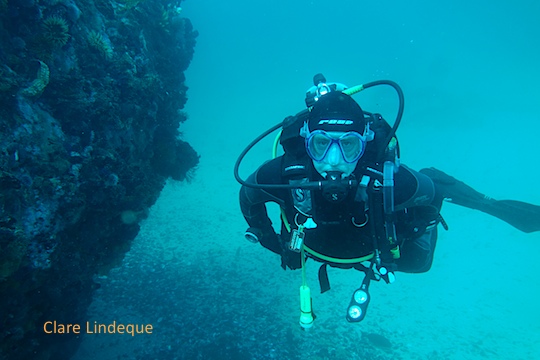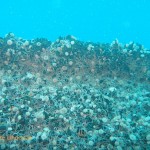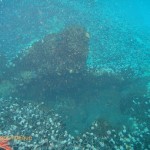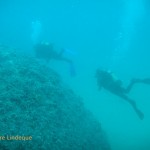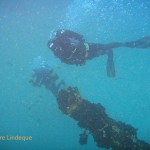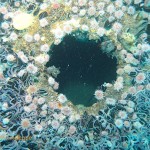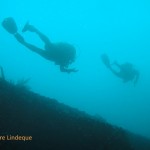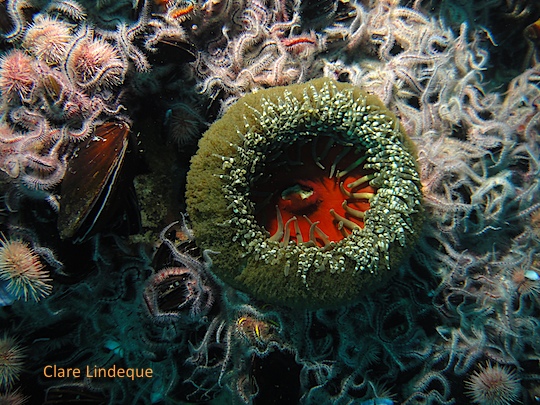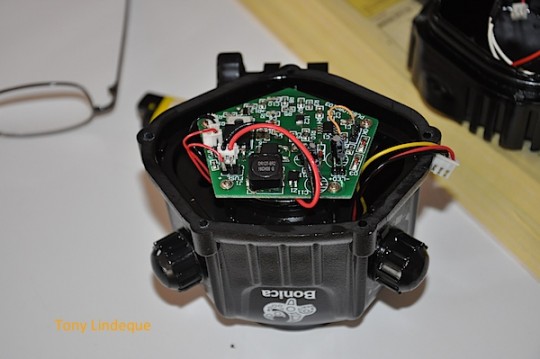
One Tuesday in early December, Tony escorted some members of the media – Murray Williams of the Cape Argus, and Bruce Hong of Cape Talk radio, on a dive along the inside of the shark exclusion net at Fish Hoek beach. It was just before the start of the school holidays, and since the net has been trialled multiple times by now and is working well, it’s a good time to raise awareness of the additional beach safety and – importantly – peace of mind that the net offers. I tagged along as photographer.

The net at Fish Hoek beach is a world first. It has a fine mesh that is highly visible underwater, and is designed not to catch anything – unlike the shark gill nets in KwaZulu Natal. The net is put out in the morning and retrieved at the end of the day, but only when sea conditions allow it. The south easterly wind can bring huge quantities of kelp into Fish Hoek bay which would foul the net, so when there is a strong south easter the net cannot be deployed.
If you’re a water person, please educate yourself on how the net works, and its intention, and share it with your friends. Even now, nine months after the trial started, I hear uninformed comments from people who have not bothered to do any reading about the net, and assume it’s the same kind of net as the ones in Durban. It’s not. The whole idea is that nothing – no sharks, no humans, no klipfish – gets hurt. Shark Spotters and the City of Cape Town have been very clear on this from the start. I had a bit of a rant about this late last year.

I digress. We went to the beach, got suited up, and went to check out the net. It was spring low tide, so at its southernmost end we were in about 2 metres of water. The net is high enough that when the tide comes in and the yellow floats rise with the water level, it simply unfurls further downwards, making an unbroken curtain. The lower portion of the net rests on the sand, with two parallel weighted lines to ensure that it lies flat. You can see that in the photo above Murray is gripping one of these leaded lines, and that there is a fairly large amount of net waiting on the sand for higher tides.

We stuck close to the net, and didn’t see much marine life on the sandy bottom. I spotted a large sand shark (when I say I “spotted” him, I mean that I almost landed on top of him). We were mutually surprised, and he zipped away into the bay, sliding neatly under the bottom of the net. I also saw a box jelly cruising along the net. Given my recent history with box jellies, I kept clear! The sea floor in the area where the net is deployed is level, sandy and free from rocks. There’s more life on the catwalk side, where beautiful rock pools wait to be snorkelled.
We were accompanied by Monwabisi Sikweyiya, who is the Field Manager of Shark Spotters. He is a hero and I always feel a bit star-struck when I see him (although he has no idea why – he probably just thinks there’s something wrong with me). He swims along the net regularly – someone does each time it is deployed, actually – to make sure that it’s released properly and hanging straight down.

Swimming inside the net is completely voluntary. When a shark is seen in Fish Hoek bay the Shark Spotter still sounds the siren and the flag is raised to clear the water. The Shark Spotters team are still waiting to see how a shark will respond to the net when it swims close enough to be aware of it. So far none of the local sharks have come close to the net, as the summer season when sharks move inshore has only just started. Tony was half hoping that we’d be swimming along inside the net, look out through the mesh – and blammo! – see a great white shark. But we had no such luck, if that is the right word.
You can read the article that Murray Williams from the Argus wrote after the dive, here.
Dive date: 3 December 2013
Air temperature: 22 degrees
Water temperature: 17 degrees
Maximum depth: 2.3 metres
Visibility: 4 metres
Dive duration: 25 minutes



